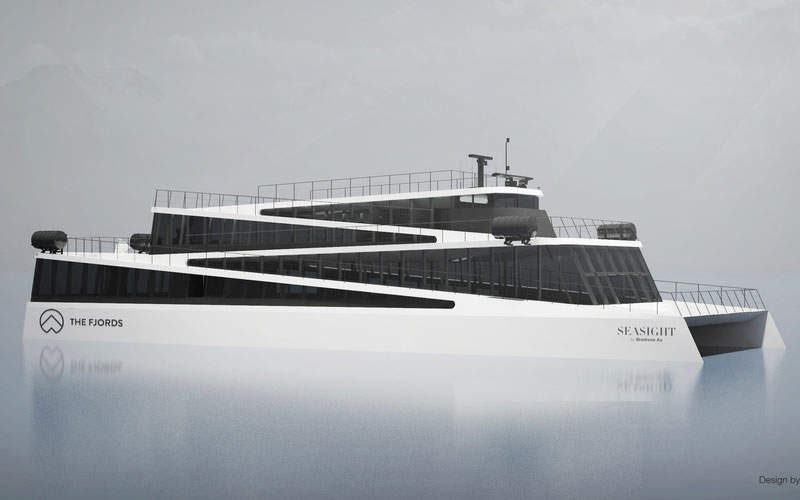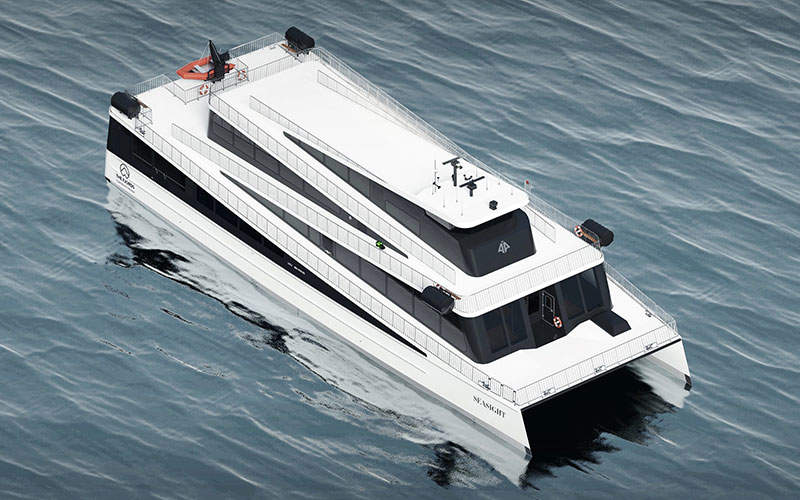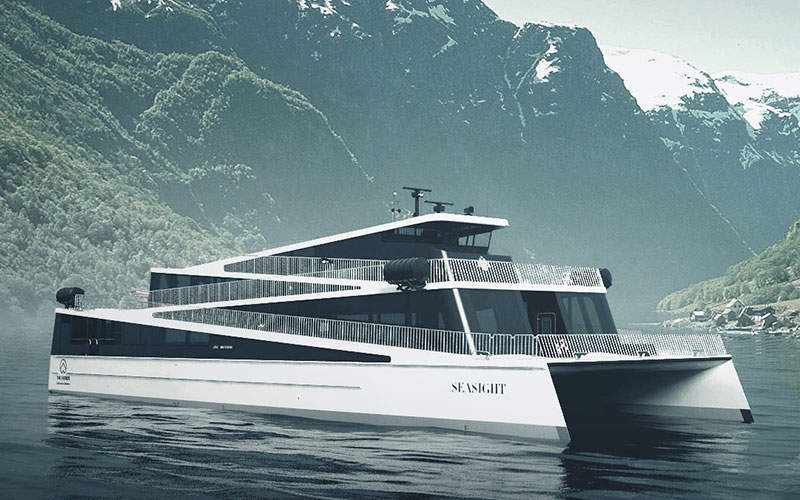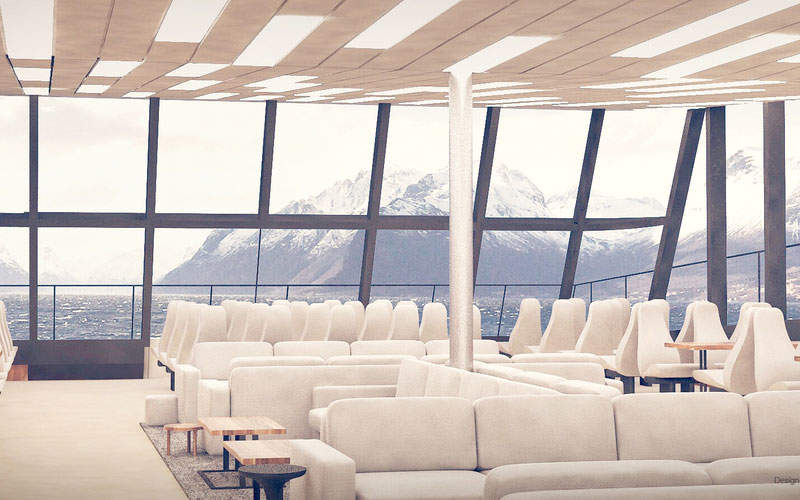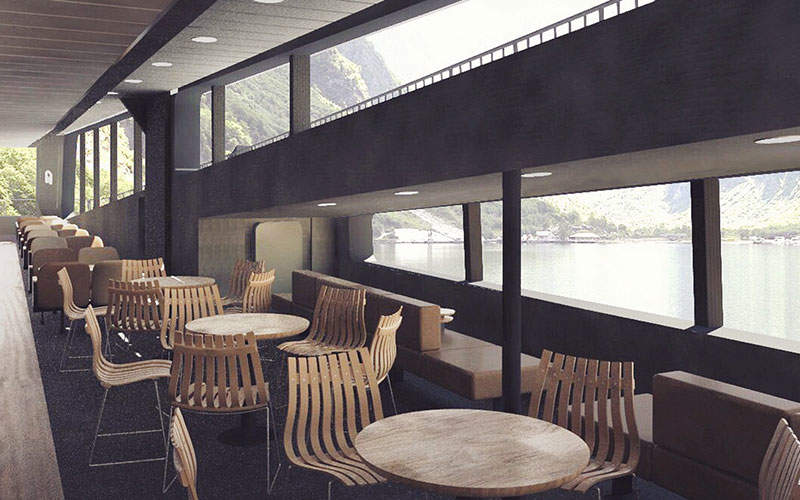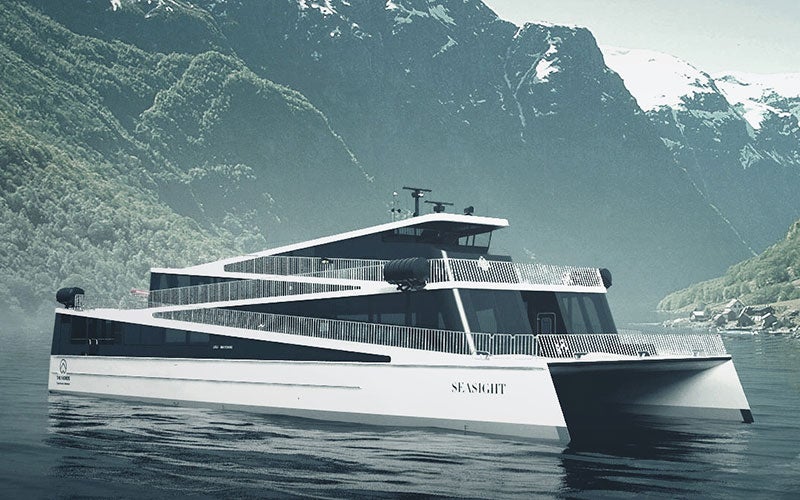
Seasight is a new sightseeing catamaran ferry that will operate on Nærøyfjord, a famous Norwegian fjord listed on the UNESCO world heritage list.
The fast ferry was developed by Brødrene and was first unveiled in April 2015.
The ferry is the first of the new Brødrene design called Seasight, which is designed specifically to give a new sightseeing experience for tourists.
Brødrene received an order from The Fjords, a Norwegian joint venture between Fjord1 and Flåm, in June 2015 to further develop the design for operations in the Sognefjord, the world’s longest fjord.
The vessel will be delivered in May 2016 and is proposed to be operated in the route between Flam and Gudvangen along the Nærøyfjord in the west of Norway, a distance of approximately 32km. The vessel will make approximately 700 journeys a year.
Accommodation onboard Seasight
The sightseeing ferry has an innovative superstructure design that creates three panorama zones, including one in the upper deck lounge and two at the forward and aft of the main deck.
The roof in the panorama zones is elevated and the windows are inclined for ameliorating the view to passengers.
Seasight ferry design and specifications
Classified as a DNV light craft, the ferry is 40m long and 15m wide, and accommodates approximately 400 passengers. Its design is inspired by the famous Trollstigen, a road winding up the Norwegian mountain trail, which twists and turns up steep mountain sides.
The ferry is made of lightweight carbon fibre materials and is incorporated with an advanced slender hull making it energy efficient.
Passengers can walk around the ferry to enjoy views of the fjords from outside. The view of the landscape is best seen from the front row view through the windows in three large panorama lounges.
The vessel is also designed for hybrid electrical propulsion to run silently, while having an appreciable range to do transport laps efficiently, in addition to cutting carbon dioxide emissions.
Propulsion of the sightseeing ferry
The ferry has two 749kW motors, two 150kW electric motors, a controllable pitch propeller (CPP) and a 576kWh battery pack.
On reaching the scenic part of the fjord, the boat will switch to battery power and run approximately at a speed of 18km/h to allow passengers to enjoy nature in complete silence.
The battery systems, to be supplied by ZEM, use lithium ion mono-nuclear (MNC) cells and modules from LG Chem. They will be installed in the hull of the vessel.
The onboard DC Grid system from ABB will manage and control energy supply between the diesel engine, propeller and charging station. The system will supply and transfer energy to the battery during charging, while diesel engines are running.
Contractors involved
ABB was awarded the contract to provide engineering and integral technology to the ferry. It is responsible for supplying a compact and lightweight version of the onboard DC Grid system. ZEM was contracted in 2015 to provide battery systems for the ferry.

